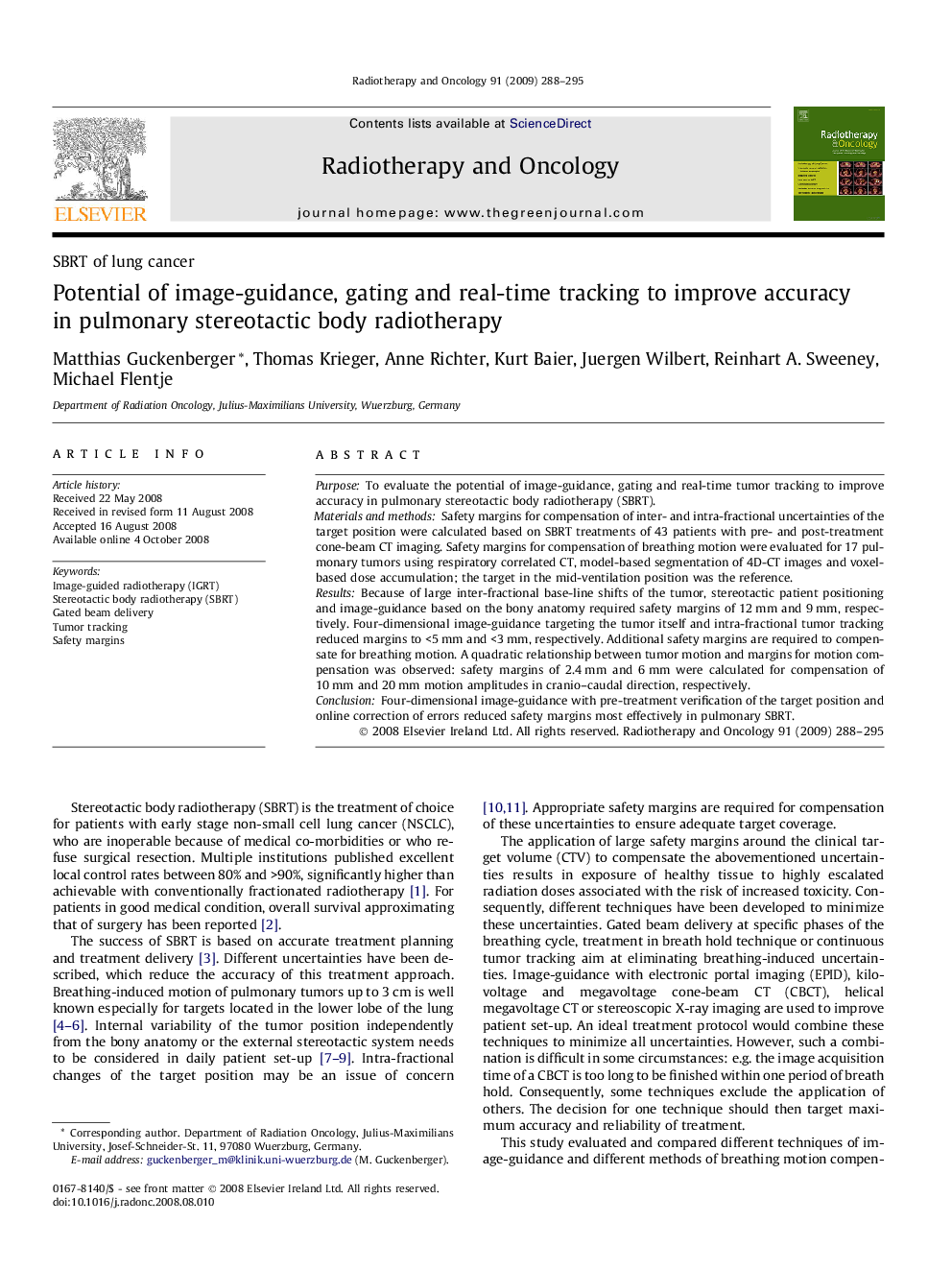| Article ID | Journal | Published Year | Pages | File Type |
|---|---|---|---|---|
| 2159107 | Radiotherapy and Oncology | 2009 | 8 Pages |
PurposeTo evaluate the potential of image-guidance, gating and real-time tumor tracking to improve accuracy in pulmonary stereotactic body radiotherapy (SBRT).Materials and methodsSafety margins for compensation of inter- and intra-fractional uncertainties of the target position were calculated based on SBRT treatments of 43 patients with pre- and post-treatment cone-beam CT imaging. Safety margins for compensation of breathing motion were evaluated for 17 pulmonary tumors using respiratory correlated CT, model-based segmentation of 4D-CT images and voxel-based dose accumulation; the target in the mid-ventilation position was the reference.ResultsBecause of large inter-fractional base-line shifts of the tumor, stereotactic patient positioning and image-guidance based on the bony anatomy required safety margins of 12 mm and 9 mm, respectively. Four-dimensional image-guidance targeting the tumor itself and intra-fractional tumor tracking reduced margins to <5 mm and <3 mm, respectively. Additional safety margins are required to compensate for breathing motion. A quadratic relationship between tumor motion and margins for motion compensation was observed: safety margins of 2.4 mm and 6 mm were calculated for compensation of 10 mm and 20 mm motion amplitudes in cranio–caudal direction, respectively.ConclusionFour-dimensional image-guidance with pre-treatment verification of the target position and online correction of errors reduced safety margins most effectively in pulmonary SBRT.
